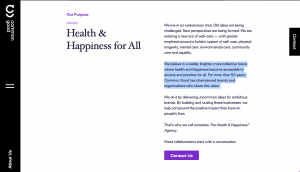By Featured
Keeping the peace is important at any time in the work year, and no employee wants to feel a tense buildup in the office. Leadership teams across the board can benefit from guidance on what to stay away from in maintaining equilibrium at work.
To uncover root causes, we’ve asked 18 thought leaders, ranging from executive coaches to enterprise founders, what they’ve experienced regarding where the unpleasantness starts between teammates. Their wisdom starts with a proper incentive that matches employee contributions and ends with prioritizing an empathic leadership style. If you need actionable tasks to bridge your hierarchy gaps, dive in for advice.
Incentivize employees’ contributions
In the startups and small businesses I support, a major cause of tension is when employees feel like they’re putting in the hard work to build the business but aren’t getting the financial rewards.
One solution I’ve seen is giving employees a percentage of the new business they bring in. This gives them an incentive to seek new opportunities while making them feel like they have ownership in the company. I’ve even drafted short contracts to accomplish this—for example, giving an employee a one-time percentage of revenue from a specific customer.
In smaller businesses where there’s more flexibility, this approach can be a game-changer. Just be sure to have a fair and objective way to track employee performance so that everyone can see what results were achieved.
Jenevra Georgini, founder and managing attorney, Spark + Sterling
Foster appreciation and leadership
A significant factor that will cause tension between employees and executives is a lack of appreciation and support for their work and their humanity. It’s beneficial for executives to understand the difference between a leader and a boss.
A leader is the team captain, and everyone on the team needs to be recognized and appreciated for what they do. It’s about appreciating the janitor just as much as appreciating your right-hand person.
Avoiding this tension is as easy as checking your ego at the door. We are all humans. Judgment divides, and understanding unites. If someone is not performing according to standards, ask yourself what you can do to understand and support them. People don’t quit jobs; they quit “bosses.” Be a captain, be a leader.
Nicholas Clay, mindfulness coach, Being ONE World
Fight uncertainty by building trust
Uncertainty is the biggest cause of tension between teams and leaders, whether it is real or simply perceived. That’s why it’s so critical for leaders to proactively communicate with their employees and share not only the positive messages but also the tough ones. If employees feel you’re not fully sharing the truth regularly, their minds wander and wonder, especially if they perceive something as going “wrong.”
Without that strong foundation of trust and transparency, employees often panic first and ask questions later. When you consider their work and livelihood are on the line, it’s easy for them to stress when things go unsaid. Put their minds at ease by giving them honesty and proactive communications every single day so that when you tell them things are going well, they believe you!
Robert Kaskel, chief people officer, Checkr
Align core values and vision
Think of it as almost like any romantic relationship. If you are dating someone for a while but are unsure where the relationship is going, then eventually it will become stagnant or start to drift in desperate directions. Let alone, if nobody in that relationship stands on any principles and core values, the relationship will build resentment from a lack of trust. Why? Because you don’t have control over the narrative; therefore, you have two people operating as individuals rather than as a team.
This is no different in business. When signing on to work for a company, it’s often because they want to be part of the company’s larger vision and are in alignment with the core values. If that isn’t established, then employees are eventually going to feel stagnant and build resentment from a lack of trust. Why? Because the employee doesn’t feel in control over their narrative and the employee versus executives operate as individuals rather than as a team.
This is the subconscious tension that happens between employees and executives, which normally translates into consciously feeling like a disgruntled worker or, at worst, getting fired because of a disgruntled executive. As a company, you must commit to something bigger and get employees and executives to see that they are creating something “together.”
When executives can integrate the company’s vision with its core values and say, “I’ve got your back,” “I know this week has been rough, but this is where we are going, and this is what we stand for,” then there will be more harmony and trust in the workplace. Just like any type of positive reassurance you would receive from your partner, executives have to constantly keep that North Star in mind and make sure they are consistently communicating it to their employees.
Michael Blunt, founder, MichaelABlunt.com
Clarify leadership expectations
One of the biggest things that can lead to tension between employees and executives is any amount of dishonesty. When leadership is unclear about what they expect, want, or need, employees are often left to guess.
This can lead to multiple problems, including a feeling of disconnection from leadership and the company, underperformance, resentment, and confusion. To avoid this, leadership needs to be explicitly clear about expectations—both from employees and from specific individuals.
When this has become a problem, there needs to be a series of conversations in which leadership acknowledges their contribution (the lack of transparency and/or lack of communication) and a set of clear guidance to move forward. Leadership will also need to recognize and voice that trust may take time to rebuild, and that they are invested in that process.
Anne Welsh, clinical psychologist and executive coach, Dr. Anne Welsh
Understand and communicate operations
In marketing teams, the tension between employees and executives often arises from a lack of operational understanding and communication. Based on interviews with hundreds of marketers and my experience, many senior marketing execs are too removed from the grunt work.
They don’t understand the operations or constant changes (particularly in social and digital), and as a result, they don’t accurately communicate to management what’s happening in the department, causing tension. This structure sets up marketing coordinators, who wear too many hats in 2023 (design, social, email, paid), for failure because they have no one to learn from. Siloed communication exacerbates this tension.
Marketing departments are often the last to know, hindering input into product, offering, and promotion decisions, ultimately leading to tension and missed opportunities. Executives must boost their operational knowledge, involve marketing from the start, acknowledge their value, and break down silos.
Natalie Koutsikas, director, Digitale
Maintain rational ego states
In workplace interactions, one major source of tension between employees and executives lies in the automatic, often subconscious, adoption of different “ego states.” Rooted in transactional analysis (Dr. Eric Berne), these ego states—parent, adult, and child—dictate our responses to confrontation and authority.
The parent state can manifest as nurturing (going out of your way to help the person) or controlling (telling the person what to do). The child state may appear as adapted (always complying, regardless of one’s own needs) or rebellious (disruptive and unruly). In contrast, the adult state, driven by rational thought, fosters balance, compromise, and perspective.
As a manager, you may start a conversation with an employee in the adult state, but if they reply in a certain way, it might prompt you to adopt a more parental approach, which could lead to conflict.
The key to avoiding or rectifying this tension is to notice these changes in our behavior and learn to consciously operate from the “adult” ego state. Try not to respond emotionally; stay focused on the challenge and achieve a resolution that meets everyone’s needs. Think about which ego states are at play in the communication, and seek to ensure everyone is operating in “adult” mode.
Gemma Bullivant, strategic HR, reward and executive coaching, Gemma Bullivant HR & Coaching
Honor promises and update progress
Employees, like people in any relationship, don’t appreciate an over-promise, under-deliver situation. It feels like being lied to. For example, many executives were moved to make big promises to employees to address diversity and equity in 2020.
Now, three years later, employees are calling out executives who have failed to deliver on those promises. Executives can’t understand why employees don’t understand that these initiatives take time. Employees are in the dark about what has and hasn’t been done.
To avoid a situation like this, it’s really important not just to tell employees about your goals—you also have to explain what your strategy is to reach those goals and to regularly report on your progress. Employees can understand when goals aren’t met if there has been a genuine effort, but if there is no communication, they are likely to assume that it was never a real priority.
Liz Kofman-Burns, cofounder, Peoplism
Connect executives with the day-to-day activity
I recently interviewed 100 leaders and employees and asked them about their biggest challenges. Employees want to feel seen, valued, and heard, and don’t feel they are considered when executives make decisions that affect their work. Executives become frustrated with the need for more support and motivation from employees to execute on strategic priorities.
Tension builds because there is a lack of connection. In my interviews, a senior vice president eloquently stated, “The executive team needs to come off the balcony and onto the dance floor to see what is happening day-to-day.” Creating a connection takes effort from both sides, but leaders must lead the effort.
Fireside chats, roundtables, and skip-level meetings are all brilliant strategies to increase communication and connection between executives and employees.
Shaina Lane, owner and certified executive coach, Premier Professional Coaching
Communicate to realign with company goals
One specific thing that can lead to and/or cause tension between employees and executives is a misalignment of the goals and strategies of the company. In organizations with multiple layers of management, it is common to have this misalignment, which is often caused by a lack of transparent communication between both parties. Because of the ever-changing business environment, goals and strategies can change throughout the year.
To avoid the misalignment among employees and executives, communication between these groups must be timely, consistent, relevant, and solution-focused. If a misalignment has already occurred, it can be rectified by opening the lines of communication as soon as possible and following the same pattern of transparency, timeliness, consistency, relevancy, and solution focus. This can be achieved via town halls and smaller gatherings with Q&A sessions.
Michelle Enjoli, career development speaker and coach, MichelleEnjoli.com
Acknowledge and address resource limits
Inadequate resources can be a cause of tension between organizational leaders and employees. Employees often perceive executives as developing strategic plans with far too ambitious goals, given the resources—be it budget, staffing, technical, or other tools needed.
Employees expressing concerns are often shut down without acknowledgment, leading to even more tension. Open communication can help to ease these tensions. Leaders should address the strategic needs and aggressive goals while acknowledging tight resources.
A promise to support employees, however possible, can gain goodwill that eases stress and helps employees feel motivated to make the extra effort needed for success.
Shelley Piedmont, managing director and head coach, Career GPS, LLC
Include employees in the company narrative
Employees don’t have to know everything or be involved in all the decisions. But they absolutely should be clear on the company narrative and know the answers to these questions:
1) What are you building?
2) How do you plan to build it?
3) For whom are you building it?
4) ?Why are you building it?
If you communicate with them through this story, they can see their role in the narrative and how their daily work applies to the overall mission and its chances for success. Neglecting to communicate this story leads to confusion, lack of motivation, sometimes resentment, and eventually breakdown. Bring them into the fold—let them see the vision and how they are vital to it, and you will encourage the buy-in and ownership you need for a strong team.
Rain Bennett, filmmaker, author, and storytelling coach, RainBennett.com
Optimize management styles through feedback
As the founder of a successful agency with a small yet strong 10-person team, I always took responsibility for eliminating tensions and maintaining productive and healthy communication and relationships between my staff, managers, and executives.
In my experience, differences in management styles and preferences often lead to tensions between employees and executives, and this is something you should regularly discuss and optimize with your employees.
This is not about employees telling executives how to run their business; it’s more about encouraging employees to speak up and share feedback on how their leaders and managers can help them do their best work and thrive with the company.
David Gaglione, founding partner, PS212
Maintain trust with honest communication
There’s a saying: it takes a lot to build trust, but only one thing to break it. This saying holds true with the relationship between executives and employees. Organizations often have uncertainty, which means employees can’t always know everything leadership knows.
Unfortunately, some executives, to smooth the waters, over-promise or give indications to employees that things will go a certain direction when, in fact, they know it could be the opposite—especially in the face of layoffs, downsizing, or restructuring.
Don’t break trust with your staff by making assurances you aren’t sure you can keep. Instead, let them know you will keep them as informed as you can about whatever the issues are at hand. Be a person with compassion, empathy, and integrity in all you do.
Aleasa Word, DEI consultant and executive coach consultant, A. Word & Company
Set clear expectations
One significant factor that can lead to tension between employees and executives is the lack of clear communication regarding expectations. This issue often stems from a common assumption that everyone agrees when, in reality, there may be differing interpretations.
In my experience, assuming that both leaders and employees are aligned without explicitly confirming is a surefire way to invite confusion and frustration. Leaders may have clear visions and expectations that are not directly expressed, so employees might not deliver the results as expected.
To reduce such tensions and promote collaboration, both sides need to foster a culture of open communication. Executives should articulate what needs to be done and explain the “why” behind it, how it ties into broader organizational objectives, and what specific outcomes are expected. Likewise, employees should feel encouraged to seek clarification when expectations are unclear.
Nannapat Sage, executive coach, Potentia
Live out organizational values
Navigating the balance between organizational values and individual beliefs can be tricky. Diversity, equity, and inclusion are common battleground topics in my work. It’s not just about saying the right things; employees crave tangible efforts. Initiatives like diverse hiring practices and mentorship programs showcase an organization’s genuine commitment, fostering a truly inclusive culture.
Work-life balance is another hot spot, especially when different generations interpret it differently. If a company boasts about prioritizing employee well-being but expects a 24/7 hustle, it’s a recipe for stress and dissatisfaction. Creating policies that discourage after-hours emails and respecting scheduled time off sends a clear message—your well-being matters as much as your work.
To avoid values-based tensions, leaders must go beyond words on a slide. Articulate values that resonate across generations, weaving them into your organizational culture. Don’t just declare your values; live them. Open the floor to discussions, actively seek employee feedback, and be flexible enough to tweak strategies. Make your values the heartbeat of your organization.
Chelsea C. Williams, founder and CEO, Reimagine Talent Co.
Empower teams through delegation
In my journey as a business leader and coach, I’ve noticed a common stumbling block: leaders getting tangled in the web of details and struggling to delegate effectively. It’s like they’re clutching onto the “how” with a tight grip, losing sight of the bigger picture—the vision we’re all working towards.
When leaders find themselves mired in the day-to-day minutiae, they get lost in a forest of tasks. The danger here is not just inefficiency, but in eroding the trust within the team. Trust is the glue that holds a team together and propels it forward.
To navigate this challenge, leaders need to recognize the incredible strength within their team. Team members aren’t mere task executors; they are problem solvers, equipped with insights often closer to the actual challenges at hand.
Delegation isn’t about the distribution of tasks; it’s strategic empowerment. It’s about trusting your team with a slice of the vision, inviting their expertise, and encouraging innovative problem-solving. When leaders shift their focus from “how” to “what” and “why,” it not only liberates their time but also nurtures an environment where the team feels valued and capable.
Effective leadership lies in understanding that the role isn’t to micromanage every step but to guide the ship’s overall direction. It’s about cultivating a culture where trust, collaboration, and shared ownership flourish. When leaders embrace delegation as a strategic ally, they not only unleash the full potential of their team but also steer the organization toward its vision with collective strength.
Prerika Agarwal, MBA, CEO and executive coach, Inspiration Careers
Prioritize empathy in leadership
The development of empathy skills in the workplace is of paramount importance for fostering a positive culture. An individual’s ability to comprehend the emotions of their team members and perceive unspoken cues is a valuable capability.
As leaders hone their emotional intelligence, they become increasingly adept at forging deep connections with their teams. It is noteworthy that, historically, this skill set has not been accorded the priority it deserves.
As work continues to evolve, it has become increasingly important for leaders to learn how to connect with their teams and bring the human element back into business. This is especially true now, given the current record increase in mental health issues, burnout, and job dissatisfaction. Prioritizing this connection is crucial in creating a successful and fulfilling work environment.
Kristina Holle, executive coach, Holle Consulting
(17)










